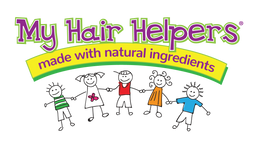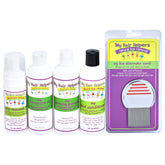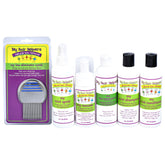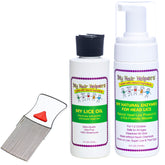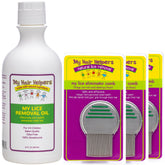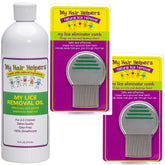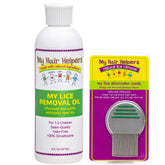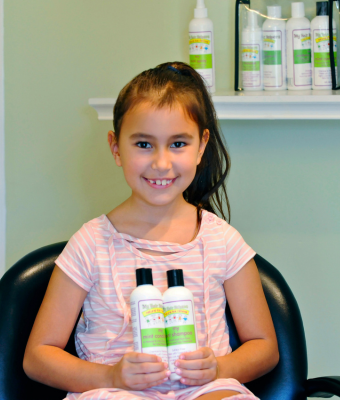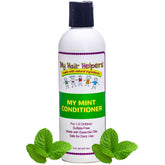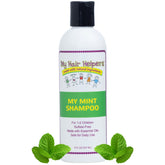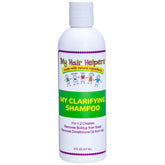WHY ARE LICE RESISTANT TO OTC PRODUCTS?

Head lice, tiny parasites that live on the human scalp, have been a nuisance for centuries. Despite the wide array of treatments available, including over-the-counter (OTC) shampoos and prescription medications, many families find themselves in a frustrating cycle of re-infestation.
One of the key reasons for this persistence lies in the increasing resistance of head lice to traditional products. Understanding the science behind this resistance can help parents and caregivers make more informed choices about lice management.
What Are Head Lice?
Head lice are small insects that require human blood to survive. They can run and climb, but they cannot fly. They spread primarily through direct head-to-head contact and are most common among children. The three stages of the lice life cycle include:
- Nits (eggs): Tiny, oval-shaped eggs that attach firmly to hair shafts.
- Nymphs: Immature lice that hatch from nits and mature into adults within 7–10 days.
-
Adults: Full-grown lice, about the size of a sesame seed, capable of laying eggs to perpetuate the cycle.
How Traditional Treatments Work
Most traditional lice treatments, including OTC shampoos and lotions, rely on chemical insecticides like pyrethrins or permethrin. These compounds target the nervous system of lice, effectively paralyzing and killing them. For decades, these products were the gold standard for addressing head lice. However, in recent years, their effectiveness has significantly diminished.
The Rise of "Super Lice"
The term "super lice" refers to strains of head lice that have developed genetic mutations making them resistant to the chemical insecticides in traditional treatments. Studies estimate that 98% of lice populations in the United States now exhibit resistance to pyrethrins and permethrin. This phenomenon is attributed to a process called selective pressure:
- Initial Exposure: When a population of lice is exposed to an insecticide, most die, but a small percentage with genetic mutations may survive.
- Survival and Reproduction: These resistant lice reproduce, passing on their resistance genes to the next generation.
- Dominance of Resistant Lice: Over time, resistant lice become the majority, rendering the insecticide less effective.
Understanding the Genetic Mechanism
The resistance to traditional lice solutions is linked to specific genetic mutations in lice populations. Researchers have identified mutations in the voltage-gated sodium channels (VGSCs) of lice. These channels are the target of pyrethrins and permethrin. Mutations in these channels prevent the insecticide from binding effectively, allowing the lice to survive exposure.
Challenges in Combating Resistant Lice
The rise of super lice poses significant challenges for parents and medical professionals. First, OTC products may fail to eradicate lice completely, leading to repeated infestations. Second, the overuse or misapplication of these products can exacerbate resistance and irritate the scalp. Lastly, families may waste time and resources on ineffective products before seeking alternative solutions—solutions that tend to be safer in the first place.
Alternative Solutions for Lice Management
As resistance to traditional treatments grows, alternative methods have gained popularity. Manual removal of head lice is one of the most reliable methods, though it works best for mild cases of head lice. Using a lice comb, lice and nits are physically dragged out. Another option are silicone-based products that contain dimethicone. Safe and approved by the FDA, dimethicone works by slowing down lice in its thick oil, bypassing chemical resistance mechanisms.
Professional lice removal services refer to specialized clinics that offer comprehensive lice management using natural methods. Lastly, preventative measures remain important and include regular head checks, avoiding head-to-head contact, and not sharing personal items like hair brushes and bedding. These steps can help reduce the risk of infestation.
Conclusion
The growing resistance of head lice to traditional solutions underscores the need for education and innovation. While "super lice" present a significant challenge, alternative products and preventative strategies offer effective solutions. By understanding the science behind resistance, parents and caregivers can make informed decisions to protect their families and break the cycle of infestation.
My Hair Helpers offers an extensive line of head lice products that are safe and effective for all ages. You can learn about our step-by-step process and the products we recommend to effectively manage head lice infestations in your home. With fast shipping, family-friendly pricing, and natural ingredients, your family is in great hands with My Hair Helpers! Visit My Hair Helper's website to place your order!
